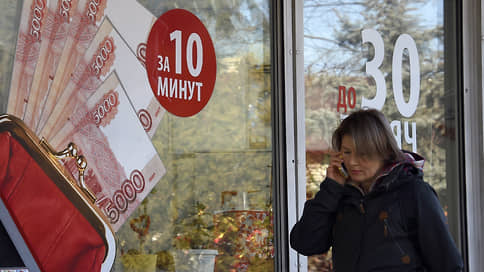IFCs make investors nervous – Newspaper Kommersant No. 31 (7476) of 20.02.
[ad_1]

Attempts by microfinance companies (MFCs) to raise funds in the public borrowing market face problems – bond placements are delayed, even large companies do not always manage to find investors. Experts point out that there are still investors on the market who are ready to work with risky segments, but microfinancers will simply have to pay a risk premium. Market participants themselves blame “populist mythology that makes investors nervous” for everything.
On February 17, IFC Webbanker announced the postponement of the end date for the placement of bonds by a month, until March 31, according to the Interfax information disclosure server. Initially it was assumed that the placement will be completed on February 22.
“Webbanker” began the process of placement by closed subscription of exchange-traded bonds on August 31 last year. The company expects to place bonds for 100 million rubles. She already has two issues on the stock exchange, both for 100 million rubles, for a period up to 2025 and 2026. “The first one, posted in 2021, sold out within one day. The other two, each for 100 million rubles, were issued in the summer of 2022, when the market situation changed dramatically,” the company clarified. “We successfully implemented the second issue, and the third is now sold out by more than 70%.”
The dynamics of trading was strongly influenced by the announcement of a partial mobilization in September, but since the beginning of 2023, sales have begun to grow again, and IFC expects to “soon sell the remaining papers.” The company “intends to extend the bond issue until the order book is fully closed.”
Webbanker is not the only major MFC player now trying to raise funding on the public market. So, on February 16, papers worth 200 million rubles. placed the IFC “Summit” for three years. The Bystrodengi company recently placed bonds in yuan for 175 million rubles.
A total of 23 IFC securities issues were registered on the Moscow Exchange. The largest are MFCuzbass (9 billion rubles), MFC CFP (1 billion rubles), MoneyMan (2 billion rubles). In general, IFC securities are traded on the stock exchange for almost 19 billion rubles.
Public borrowing remains an expensive, but still affordable way for microfinancers to diversify funding (see Kommersant dated November 22, 2022). Compared to the potential of the market, the share of funding of the IFC portfolio with such bonds is small (in 2022 – only about 10%), although it grew from 7% in 2021 in just a year, explain in the profile in SRO “MiR”.
“The importance of the bond market is explained by the fact that the traditional source of funding – bank loans – is poorly represented in the industry,” says Dmitry Alexandrov, executive director of Ivolga Capital Management Company. “In Russia, only three or four banks are ready to work with IFC, which forces companies to attract direct loans and enter the public market.
At the same time, a number of companies will need to refinance public debt in 2024, due to the fact that the peak of sector placements occurred in 2021, and the average maturity of securities is about three years, Mr. Alexandrov notes. But now even “giants are placed with difficulty, for months, investors do not want to take IFCs in their portfolios, they are embarrassed by regulatory risks” (see Kommersant on February 8). “Issuers are already raising rates, if only they would take them, and the process is going smoothly,” explains Dmitry Alexandrov. The placement of high-yield bonds, which include IFC bonds, sometimes takes a little longer than planned, confirms Elman Mehdiyev, chairman of SRO MiR.
Nevertheless, there is still demand for MFI bonds, albeit limited. “It’s just that investors expect a higher industry risk premium in the segment,” notes Dmitry Alexandrov. “But not all IFCs are ready to pay this premium, due to the fact that they have the opportunity to wait for lower rates.” IFC papers are of interest to qualified investors who are looking for a fixed yield of about 18-19% per annum and at the same time understand and understand the features of the industry, he clarifies. According to Elman Mehdiyev, the main reasons for the uncertain investor demand for IFC bonds are the lack of information about the market and “populist mythology that sometimes makes retail investors nervous.”
[ad_2]
Source link





